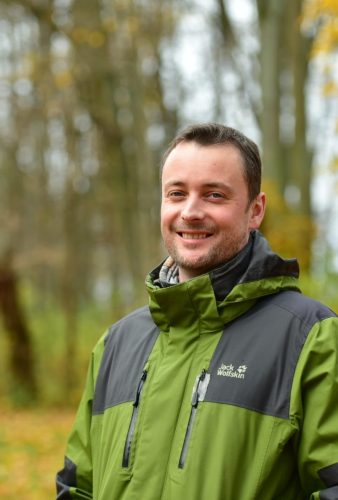- Academic title:
- PhD
- Position:
- Post-doc

2021: PhD in Ecology, University of South-Easten Norway (Norway); Campus Bø; Department of Natural Sciences and Environmental Health; Faculty of Technology, Natural Sciences and Maritime Sciences.
2013: MSc. Forest and Nature Conservation (specialization: ecology), Wageningen University (Netherlands), Resource Ecology Group.
2010: BSc. Forest and Nature Conservation (specialization: ecology), Wageningen University (Netherlands), Resource Ecology Group.
Ticks have the largest range of transmissible pathogens of all parasites in the world. Many aspects of the relationship between ticks and their hosts remain currently unknown, yet these aspects are important to understand the epidemiology of tick-borne diseases to humans, domestic animals as well as wildlife. During my PhD I investigated the climate driven range expansion of several tick species along altitudinal gradients, at their latitudinal range limit in Norway; by assessing the larval burdens on small mammalian hosts. We found that ticks had managed to establish at much higher altitudes than was previously believed. Here in Białowieża, I am investigating how the wolf-mediated distribution of deer is affecting tick bite risk, and infection risk of Borrelia burgdorferi s.l. (the causal agent of Lyme disease). As wolves are known to affect the habitat selection of deer, and deer are an important host for adult ticks, their distribution consequently affects the abundance and density of ticks in the environment and the resulting bite risk. However, as deer are also non-reservoirs for B. burgdorferi s.l., their presence reduces the relative prevalence of the pathogen within the tick population. As wolves are increasingly recolonizing parts of Europe where they were previously extinct, understanding their influence on tick distribution may help us predict the future health impacts of their arrival.
Publication list
De Pelsmaeker N, Korslund L, Steifetten Ø. 2022. Host in reserve: the role of common shrews (Sorex areneus) as a supplementary source of tick hosts in small mammal communities influenced by rodent population cycles. Ecology and Evolution, 12:e8776. https://doi.org/10.1002/ece3.8776
De Pelsmaeker N, Korslund L, Steifetten Ø. 2021. High-elevational occurrence of two tick species, Ixodes ricinus and I. trianguliceps, at their northern distribution range. Parasites & Vectors 14:161. https://doi.org/10.1186/s13071-021-04604-w
De Pelsmaeker N, Korslund L, Steifetten Ø. 2020. Do bank voles (Myodes glareolus) trapped in live and lethal traps show differences in tick burden? Plos ONE 15(9): e0239029. https://doi.org/10.1371/journal.pone.0239029
Nielsen ÓK, De Pelsmaeker N, Guđmundsson A. 2013. Rock ptarmigan (Lagopus muta) health studies in Northeast Iceland 2012: Morphology and body reserves. Annual Report ot the Icelandic Insititute of Natural History (Nattúrufræðistofnun (Nattúrufræðistofnun Íslands). ISSN 1670-0120 https://utgafa.ni.is › skyrslur
2019: Swedish University of Agricultural Sciences, Department of Aquatic Sciences and Assessment, Division of Ecology and Biodiversity, Uppsala, Sweden, 1 week
2012: Institute of Natural History, Garðabær, Iceland, 4 months
Committee on Environmental and Evolutionary Biology of the Polish Academy of Sciences - Secretary of the Committee